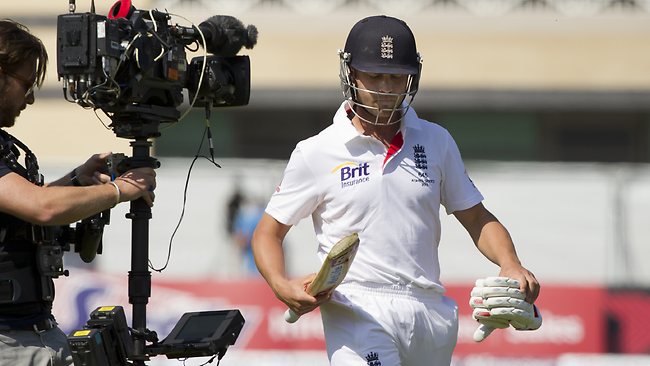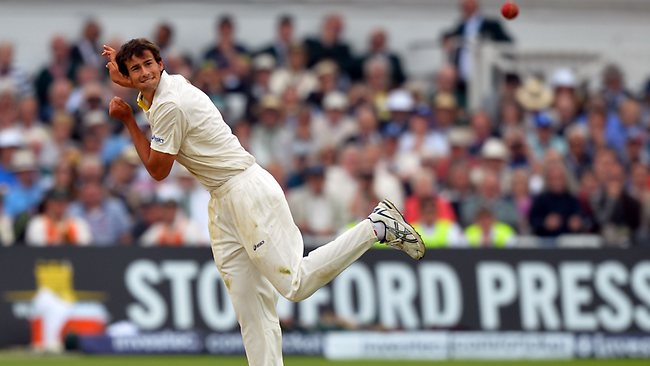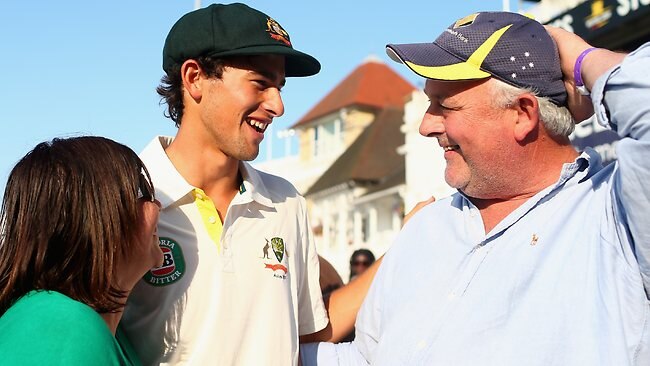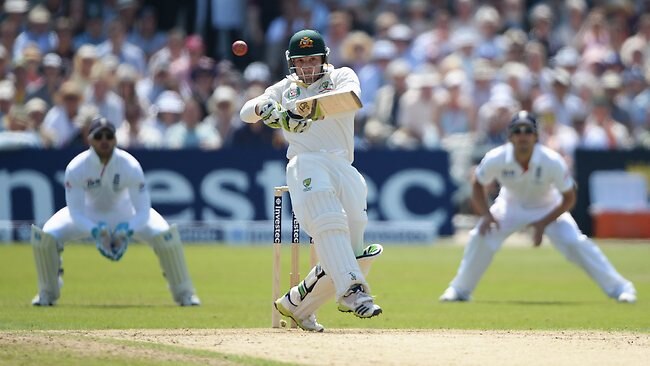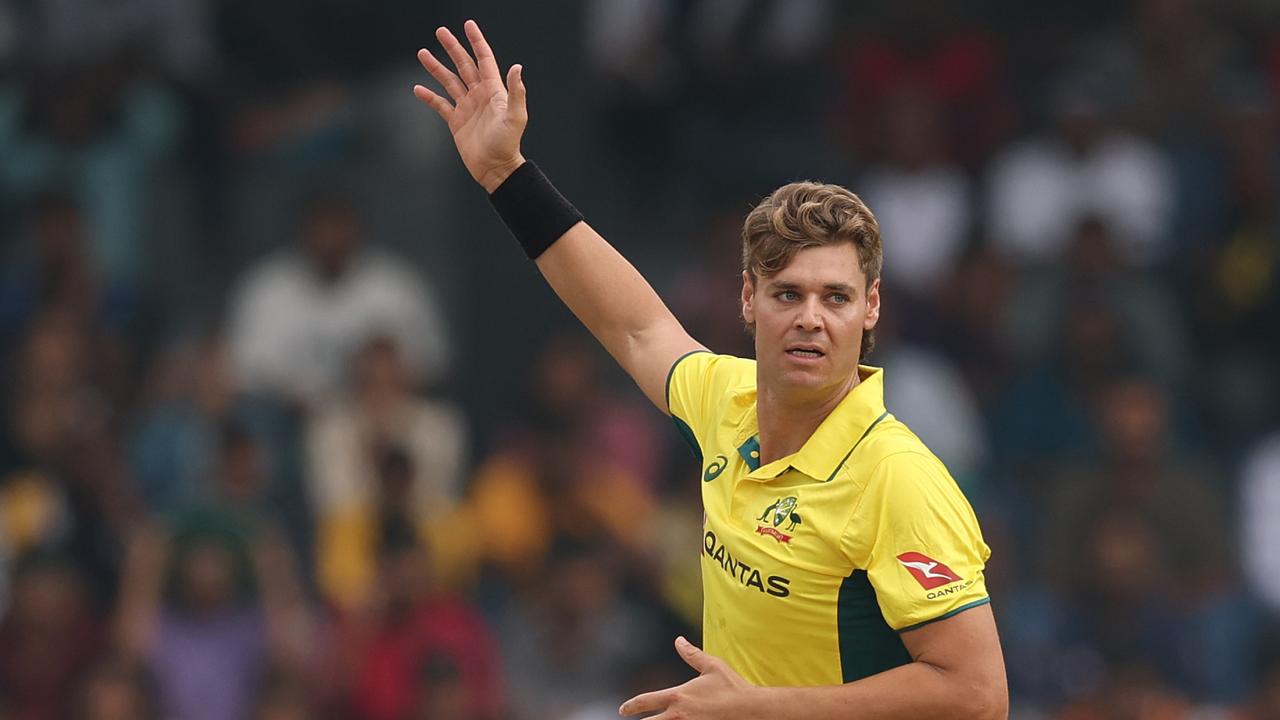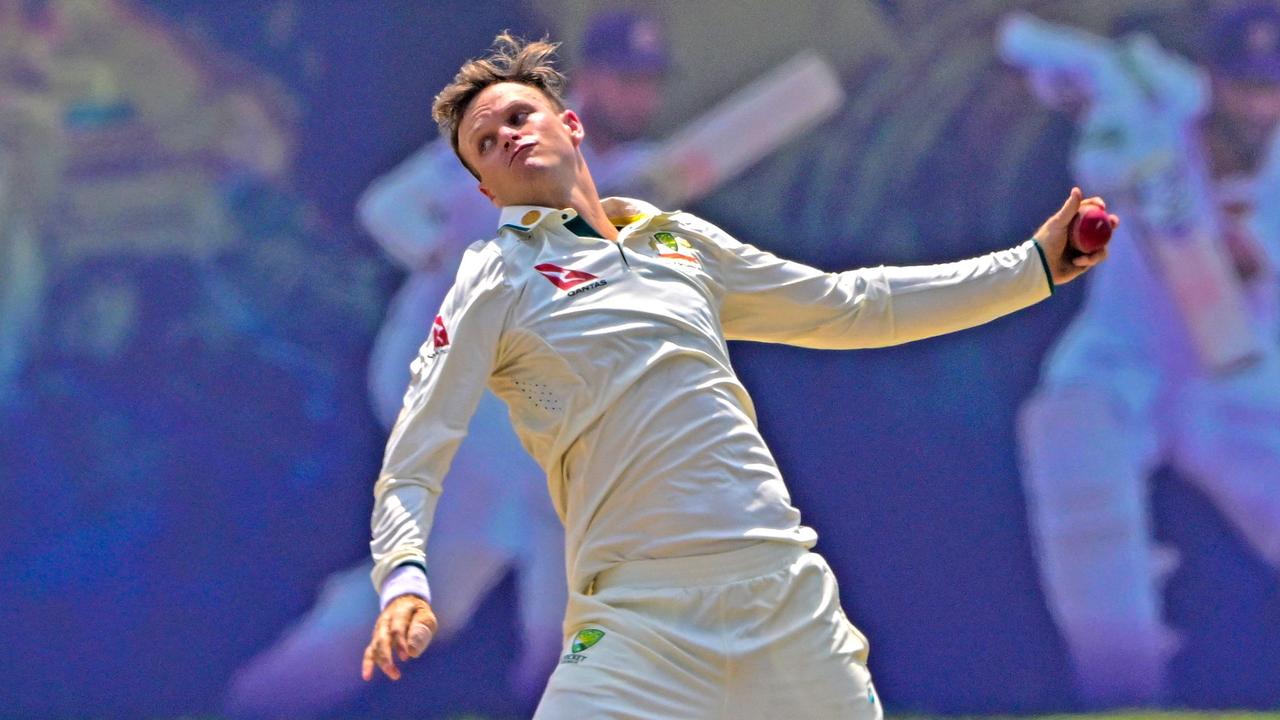England leads by 15 runs after Ashton Agar's 98 in Ashes debut
THE greatest innings by a No.11 batsman in Tests ended just two runs short of an astonishing century on debut as Ashton Agar turned the first Ashes Test on its head.
THE greatest innings by a No.11 batsman in the history of Test cricket ended just two runs short of the most astonishing century on debut as 19-year-old Australian Ashton Agar today turned the Ashes Test at Trent Bridge entirely on its head.
Coming to the wicket with Australia reeling at 9-117 after having lost 5-9 in 27 minutes of absolute carnage, Agar joined with Phil Hughes in the highest last wicket stand in 136 years of Test cricket, 163 runs, to not only match England’s 215 but see his side through to the most unexpected of 65-run leads.
Asked at the end of the day whether he regarded it as a tragedy that he had missed out on a century on debut or as “bloody brilliant” that he had made 98, a beaming Agar replied: “Exactly the way you said it. Exactly the same. I’m super happy and I'm happy me and Hughesy could get the team in some kind of winning position.”
It took only until the eighth over of England’s second innings for the full significance of their world record stand to become apparent.
PICTURE GALLERY: Agar's amazing innings
In the space of two deliveries, Mitchell Starc had opener Joe Root caught down the legside for five and then Jonathan Trott lbw for a duck to have the home side struggling at 2-11. Both dismissals were to become the stuff of controversy in England, Trott’s in particular because the original not out ruling appeared to be reversed by the third umpire, South African Marais Erasmus, without any compelling evidence for the overturn, but nonetheless they stood.
That momentarily set Australian hearts a’flutter with thoughts of an England collapse but Kevin Pietersen joined with captain Alastair Cook to battle stubbornly through the final session without further loss as England went to stumps at 2-80, a lead of 15 with three days still to play, if required.
Cook finished on 37, Pietersen on 35, the two of them facing 35.2 overs after tea in which they added only 69 runs. Importantly for England, however, they ensured no more wickets fell.
“I think if we can break the partnership the power will definitely be in our hands,” said Agar. “It's a pretty good wicket, especially to play the quicks on and there's a lot of time left in this game. So if we can get through them tomorrow I think we can win this game.”
The dawdling last session brought a mildly deflating end to what had been a giddy rollercoaster of a day for the Australians. And yet it was a situation they would have grasped with desperately glee at 11.58am, when James Pattinson had just become the ninth wicket to fall with Australia still 98 runs in arrears.
At that point it seemed there could be only one winner in this match – and it would not be the team wearing the baggy greens.
If ever a debut Test innings deserved to be capped by a century it was this one by Agar. No Test cricketer has ever reached three figures batting at No11 and there’s a very good reason why not. Not only can the last man in not afford to make a mistake but neither can his batting partner – and in this instance Hughes magnificently applied himself to his supporting role to finish unconquered on 81.
Never in his most feverish dreams would he have contemplated the day would come when it fell to him to play second fiddle so that a No11 could reach his century.
But having done his bit, Hughes then looked on in despair when Agar, on 98, rocked onto the back foot and cracked a pull shot off Stuart Broad straight out of the meat of the bat, only to pick out a diving Graeme Swann at deep mid-wicket.
“I probably hit it a bit too well,” he said later.” All the other ones I'd been hitting up and over the top and I tried to come down a little bit on that one and picked him out perfectly. I could have made a better decision there, but oh well.”
Agar stood motionless for a second, taking in what had happened, but then he broke into a broad if perhaps slightly laconic smile. To have come so close!
Ah yes, but to have come so far. This was only the 17th first class innings of his career, remember, and his first in the Test arena and yet already he shares the company of Matt Hayden, Michael Clarke, Doug Walters and Sir Donald Bradman in the world record book – the other Australians to have registered the highest scores ever in their respective batting positions of opener, No4, No6 and No7… Bradman scoring 270 there against England in 1937 in an inverted batting order on a sticky wicket. And to think that all Agar’s family had wanted to see from the western stand was him scoring a single run so that he didn’t begin his Test career with a duck.
Among the many milestones he left trailing behind him was Glenn McGrath’s record for the highest innings by an Australian No11, 61, but let’s not in any other way link Agar’s batting to McGrath’s.
He might have scored his runs off only 101 deliveries but erase from your minds any thoughts of lusty, open-shirted tailender slogging. It was not until the ball before his dismissal that the Melbourne-born WA left-arm spinner played anything resembling a false shot – and frankly had he connected with his attempted one-day tennis dab down to third man to bring up his century, he surely would have been praised for his inventiveness.
Otherwise he looked more the batsman than, dare it be said, than many of the 21 players who preceded him to the wicket in this match.
Tall and elegant at the crease and utterly fearless, he played like a young man with a golden future – just as long as he can bowl half as well as he bats.
His bowling, true, is yet to be properly tested. He sent down only seven exploratory overs only in the first innings without asking any curly questions but one thing his batting showed is that he is blessed with an unflappable temperament.
No supposed rabbit ever came to the wicket with the hounds baying so loudly.
James Anderson had cleaved the Australian batting order apart, capturing 3-27 in an inspired spell of swing bowling, ably assisted by off-spinner Swann who had chipped in with two wickets of his own. The end very much seemed nigh for the men under the baggy green caps.
Agar thought otherwise, that is if he was consciously thinking at all. Certainly there were no dark thoughts clouding his young mind as he began his innings. He can, surely, have entertained no thoughts whatever of reaching the England score, let alone eclipsing it but by the end he and Hughes had Cook tearing at his fine head of dark hair in utter frustration
Admittedly the England captain was not able to call on the injured Stuart Broad for most of the first session but when he finally was able to toss him the ball just before lunch he almost instantly regretted it as Hughes peeled off three boundaries from Broad’s first over.
With the sun shining brightly and not a cloud in the Nottingham sky, Australia resumed at 4-75 on the second morning in easily the best batting conditions of the match. The untroubled ease with which Steve Smith and Hughes negotiated the initial onslaughts of Anderson and Steven Finn suggested anything was possible.
But calamity is never far away whenever Australia is at the crease, even when there are no shadows in which to lurk. So it was that just as Smith became the first batsman in this match to register a half-century, in the process taking Australia past the halfway mark in its pursuit of the England total, calamity struck.
Smith should have taken heed when beaten all ends up outside off stump by a magnificent Anderson delivery that showed the first stirrings of reverse swing but, like so many batsmen before him in this match, he failed to read the danger sign.
The very next ball, Anderson served him up a near replica, this one perhaps a centimetre or two shorter, and Smith chased it as hard as he had its predecessor, this time just getting enough of the bat edge on it to present England keeper Matt Prior with a simple catch.
Smith, in his defence, had batted superbly to that point, his 53 featuring some of the most commanding shots of the match, with his towering six over long-on off Swann the previous evening the most memorable. But, under the circumstances, Australia required of him far more than a breezy 79-ball half-century.
That started the bleeding and the jittery Australians were unable to staunch the flow, at least not until they were all the way down to their last man – or in this case teenage boy, a kid so excited to be making his debut he seemed oblivious to the crisis.
In between, however, there was a steady and solemn procession of wickets.
Smith’s 11.31am departure was followed at 11.37 by that of vice-captain Brad Haddin, playing back to a Swann corker that ripped through his defences and bowled him for one; bowling hero Peter Siddle lasted only until 11.43 before he feathered Anderson to Prior, again for one; Mitchell Starc, fresh from a last-Test 99, couldn’t score a run before taking his leave at 11.50, while James Pattinson dragged out his innings of two until 11.58 but only by resorting, somewhat optimistically it must be said, to a referral after being rapped on the pads by Swann.
Hughes, meanwhile, watched on helplessly, hoping against hope that someone would find the nous and the steely nerve to stay with him.
Out came Agar, gangly, coltish and utterly unintimidated by the disaster he was about to avert.
“(Australian coach) Darren Lehmann told me to bat the way I know how to bat and he has told the whole team to bat in their own natural styles,” said Agar. “That is what I tried to do, take the game on.”

